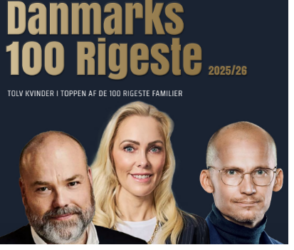Resume af teksten:
Kinas økonomi viser fortsat svækkelse, med nøgleindikatorer som investering, industriproduktion og ejendomspriser i nedadgående tendens i oktober. De fikserede aktivinvesteringer faldt med -1,7% år-til-dato, det laveste siden juni 2020, med store bidrag fra fald i infrastruktur- og fremstillingsinvesteringer samt private investeringer. Ejendomssektoren trækker økonomien ned med ejendomsinvesteringer faldende med -14,7% sammenlignet med året før, og ejendomspriserne i nedadgående spiral. Detailhandelens vækst faldt også, men guld- og smykkesalget steg kraftigt med 37,6%. Industriproduktionstrækket aftog til 4,9% fra 6,5% tidligere, mens visse sektorer som bilproduktion og semiconductor fortsatte med at vokse stærkt. Med disse nedgangstræk ser landets økonomiske politikere ud til at afvente med nye støtteforanstaltninger indtil nødvendigheden for 2025’s mål bliver mere presserende. Økonomien forventes dog stadig at ramme sit vækstmål for året uden massiv indgriben.
Fra ING:
China’s key activity indicators continued to slow across the board in October as policymakers appear to be delaying further policy support. This year’s growth target is likely to require minimal additional support to be reached, but supportive policies will be necessary to achieve long-term goals

Investment continues to disappoint already downbeat forecasts as corporates stay sidelined
Chinese fixed asset investment slumped further to -1.7% year-over-year, year-to-date, marking the lowest level since June 2020. Once again, the data is falling well short of already downbeat forecasts.
By category, we saw infrastructure investment fall into contraction territory at -0.1% YoY ytd, contracting for the first time since 2020. Manufacturing investment, which had been a solid outperformer for several years, slumped to just 2.7% YoY ytd. Private sector investment fell to -4.5% YoY ytd, while even government investment slowed to 0.1% YoY ytd and looks likely to tip into contraction territory next month.
The only silver linings were seen in China’s recent growth areas, namely the auto (17.5%) and rail, ships, and aeroplanes (20.1%) categories.
While the magnitude of the declines was somewhat surprising, the continued weakness of investment itself was not. Anti-involution policies targeting excessive price competition and the shift toward reducing redundant investments could be adding to the downward pressure. Yesterday’s poor credit data showed new RMB loans actually contracted by RMB 20.1bn in October. While October tends to be a seasonally weak month due to the Golden Week holidays, the lack of borrowing demand has been quite clear year-to-date, with new RMB loans down 7.4% year-to-date. All this suggests real interest rates remain too high to attract prospective borrowers.
FAI is slowing across the board

Property pressures persist absent new support
October’s 70 city property prices continued to show downward pressure. New home prices fell by -0.45% month-on-month, the steepest decline since October 2024. Used home prices fell by -0.66% MoM, the steepest decline since September 2024. After flatlining in the first quarter, prices have fallen at a faster pace. From the peak, new home prices are now down -11.8%, while used home prices are down -20.3%. Of the 70 cities, 45 have seen secondary market prices decline between 20% and 30% from their peak, while 3 have experienced price drops of more than 30% from the peak.
In the primary market, 6 of 70 cities saw prices stabilise or increase, the lowest proportion since September 2024. In the secondary market, we saw a second consecutive month without a single city seeing stable or rising price levels.
With falling prices and still elevated inventory levels, it is no surprise to see that property investment remains one of the biggest drags on the economy, with property investment now down -14.7% YoY ytd.
The recent downturn, with accelerating price declines, has yet to be adequately addressed. More policy support is needed to prevent the massive destruction of household wealth, which would significantly hinder efforts to transition toward a consumption-driven growth model.
Secondary market prices have mostly fallen 20% or more from the peak

Retail sales moderated by less than expected
October’s retail sales data slowed to 2.9% year on year, down only 0.1pp from September’s reading. That’s a little stronger than market expectations. Year-to-date, retail sales are up 4.3% YoY, and should still be able to close 2025 stronger than last year’s 3.5% growth. But the loss of momentum in the second half of the year nonetheless remains a little disappointing given the stated importance of domestic demand.
The major outperformer in October was seen in gold and jewellery sales, which rose to 37.6% YoY, the highest level since April 2023, as retail buying picked up with gold reaching its all-time high in October.
As we discussed in the past few months of reports, the impact of the trade-in policy continues to fade. Key beneficiary categories, including household appliances, communication appliances, and furniture, have been on a downward trend. In particular, we saw household appliance sales plunge -14.6% YoY in October, as similar promotions in 2024 create an unfavourable base effect. This pattern has previously been seen in auto sales, one of the earliest beneficiaries of the trade-in policy. A similar drag will likely emerge for communication appliances early next year.
While the policy has been successful in frontloading consumption this year, a new policy direction will likely be needed to support consumption next year.
Fading trade-in policy impact suggests a new direction for consumption support may be needed

Industrial production slowdown to be monitored closely
October value added of industry growth slowed to 4.9% YoY, down from 6.5%. This came in below expectations for a smaller decline, marking the lowest growth since August 2024. The year-to-date growth edged down 0.1pp to 6.1% YoY as a result.
By industry, we continue to see the same themes outperform. Auto manufacturing (16.8%) and rail, ships, and aeroplane manufacturing (15.2%) remain clear outperformers. We’re still seeing strong growth in semiconductor (17.7%), industrial robot (17.9%), and service robot (12.8%) production. Advanced manufacturing was identified as one of the top priorities for China in the next Five-Year Plan and is expected to continue experiencing strong growth and investment.
Industrial production has been a key driver of growth, with manufacturing meeting external demand this year. Soft industrial production confirmed the weakness we saw earlier in the month with the steeper-than-expected downturn of the PM I. While one month of soft data does not necessarily indicate a trend, the next few months appear to have a less supportive base effect. The deceleration of industrial production should be watched closely along with export data. Signs of external demand and manufacturing momentum slowing will represent significant risks to the overall outlook, given the softness of domestic demand.
Industrial production slowed in October

Slowdown of data suggests that policy support direction won’t change
Following the continued softness of the October data and an uptick in inflation, which could reduce the tailwind from the GDP deflator, risks to our 2025 GDP growth forecast of 5.0% appear somewhat balanced to the downside heading into the final stretch of the year.
There’s reduced urgency for new policy support. Stronger-than-expected growth in the first three quarters of the year is likely keeping the economy on track to meet its 2025 growth target without requiring much additional intervention. With ambitious targets set by Premier Li for 2030, targeting a GDP of RMB 170tn, along with President Xi’s aim from 2020 to double growth by 2035, it will be a marathon, not a sprint.
As such, the recent lull in new stimulus is likely only a pause rather than a reversal of direction. Policymakers may opt to conserve ammunition for next year’s growth targets. We still see room for further monetary easing next year, and fiscal support for consumption and strategic industries will likely continue.
Hurtige nyheder er stadig i beta-fasen, og fejl kan derfor forekomme.


